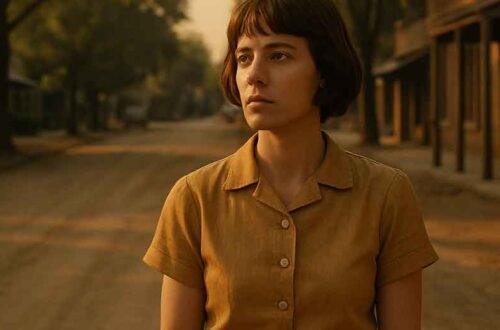The Enigmatic Legacy of Emily Bronte Wuthering Heights
Few works of classic English literature possess the raw, unsettling power of Emily Brontë’s only novel. It is a literary classic that remains both a masterpiece of Victorian literature and an incredibly uncomfortable reading experience.
Nearly two centuries after its publication, the story of Heathcliff and Catherine continues to haunt and fascinate. Its pages throb with a passionate, almost violent energy that defies simple categorization.
This enduring power lies in its complex exploration of love, revenge, and social class, all set against the wild, untamed backdrop of the Yorkshire moors. Brontë’s unique vision created a world that is as brutal as it is beautiful, leaving an indelible mark on all who enter it.
Emily Brontë: The Reclusive Genius Behind the Storm
Born in Yorkshire to a clergyman, Emily Brontë lived a life largely shielded from the outside world. Her experiences at a harsh boarding school, where two of her sisters died, profoundly shaped her worldview.
She found solace in the beloved, desolate moors of her childhood, a landscape that would become a central character in her work. With her siblings Charlotte, Anne, and Branwell, she created a rich, imaginative fantasy world through stories and poems.
Though she published only one novel, Wuthering Heights, in 1847, its revolutionary structure and emotional depth secured her legacy. She died of tuberculosis just one year later, leaving behind an Emily Brontë masterpiece that continues to echo through time.
A Tale of Two Houses and Three Generations
The novel unfolds across the desolate, windswept Yorkshire moors between 1771 and 1803. This is not merely a backdrop but a living entity that mirrors the characters’ turbulent inner lives.
Brontë masterfully constructs the narrative around two opposing worlds: Wuthering Heights and Thrushcross Grange. The Heights is rustic, wild, and battered by the elements, reflecting its inhabitants’ passionate, untamed nature.
In stark contrast, the Grange is a place of civilized refinement, order, and light. The story follows the intertwined fates of the Earnshaw and Linton families, whose lives are irrevocably disrupted by the arrival of the mysterious orphan, Heathcliff, a catalyst for chaos and change that spans three generations.
The Destructive Power of Unchanging Love
Catherine and Heathcliff’s Passionate Bond
The dark heart of this Emily Bronte Wuthering Heights analysis is the all-consuming passion between Heathcliff and Catherine. Theirs is not a conventional romance but a love rooted in a shared identity, famously declared by Catherine: “I am Heathcliff.”
This bond, forged in the freedom of their childhood on the moors, refuses to evolve or adapt. It is a strangely asexual connection that denies difference, making Catherine’s marriage to the refined Edgar Linton an act of self-betrayal.
While Catherine cannot fully embrace her new life, Heathcliff nurses his grudges with a superhuman resolve. Their static, unchanging love becomes a destructive force, setting the stage for the novel’s central tragedy.
A New Generation’s Path to Redemption
In stark contrast to the first half’s tragedy, the novel’s second part offers a glimmer of hope through the developing love between young Cathy and Hareton. Their story is one of growth and change.
Hareton, initially presented as brutal and illiterate under Heathcliff’s cruel tutelage, slowly transforms into a loyal and educated man. Cathy’s attitude also evolves, moving from aristocratic contempt to genuine love and respect.
This second-generation romance, built on patience and mutual transformation, ultimately redeems the legacy of the past. It suggests that peace can be found not in static passion, but in the slow, steady process of growth and forgiveness.
Revenge and the Cycle of Abuse
One of the most modern readings of this literary classic views it as a powerful exploration of intergenerational trauma. Heathcliff is both a victim and a monster, his cruelty a direct consequence of the abuse he suffered under his adoptive brother, Hindley.
This experience transforms him, setting him on a path of systematic revenge. He ruins the families who wronged him, orchestrates cruel marriages, and raises Hindley’s own son, Hareton, as an illiterate servant to mirror his own painful past.
The revenge and love themes are inextricably linked. Yet, his quest proves futile. Though he achieves his revenge, Heathcliff dies an empty, broken man, haunted by the ghost of his lost love. His story is a chilling portrait of how abuse begets more abuse, leaving a trail of devastation in its wake.
Class, Power, and Social Precariousness
The novel provides a sharp critique of the Victorian social hierarchy, where the gentry held a fragile and precarious position. Status was not guaranteed by title but was a constant performance of wealth and manners.
Catherine’s decision to marry Edgar Linton is driven by a desire for social elevation, a choice that seals her tragic fate. Heathcliff’s life, meanwhile, charts a dizzying trajectory from a homeless waif to a gentleman, then a common laborer, and finally back to a man of means, though never fully accepted.
Brontë presents social class as both an arbitrary barrier to happiness and a necessary structure. The novel’s ambivalent conclusion, where peace is restored only through the rightful heirs, questions the possibility of true social mobility in this rigid world.
Gothic Elements and Psychological Depth
As a Gothic novel, Wuthering Heights masterfully blends elements of Romanticism and Realism. The narrative is steeped in a supernatural atmosphere, from Catherine’s ghostly visitations to Lockwood’s terrifying dream.
The wild Yorkshire moors function as a powerful character, their untamed beauty and violent storms reflecting the characters’ inner turmoil. Brontë uses the opposing settings of the Heights and the Grange to explore conflicting values of nature versus civilization, and masculine versus feminine energies.
This is more than a simple ghost story; it is a profound psychological drama. The use of two unreliable narrators, Nelly Dean and Mr. Lockwood, forces the reader to question the truth, demonstrating the profound limitations of human perception.
Why Emily Bronte Wuthering Heights Remains Essential Reading
So why does this challenging novel endure? Its genius lies in its refusal to provide easy answers. It is not simply a love story, a revenge tale, or a narrative of abuse; it is all of these at once.
The book generates a series of unresolved tensions—between nature and society, love and hate, reality and the supernatural—that continue to haunt readers. It masterfully demonstrates the limitations of human perception and the complexity of the human soul.
As scholar James R. Kincaid noted, the novel insists on a multiplicity of readings. It is a book that can never truly be finished. This enigmatic quality is precisely why this Emily Brontë masterpiece remains a vital and essential work of classic English literature, as raw and relevant today as it was in 1847.

- I’m Aliza, the founder of Urdu Novel Bank. I built this site because I love Urdu stories and want everyone to enjoy them. As an Urdu literature lover, I choose the best novels to share with you. Here you can find free Urdu novels in romance, mystery, thriller and more. Read online or download PDF chapters without signing up. I update the library often so you’ll always have new tales to explore. My goal is to bring Urdu literature to readers around the world.
Latest Novels
- December 18, 2025LifestyleResidence Permit in Azerbaijan for foreigners
- December 18, 2025SEO DigitalHow To Offer White Label SEO Services That Deliver Results
- December 18, 2025BusinessWhat To Know About Using Portable Classrooms When Attendance Increases
- December 17, 2025Home ImprovementCreating the Ultimate Reading Escape in Your Garden





